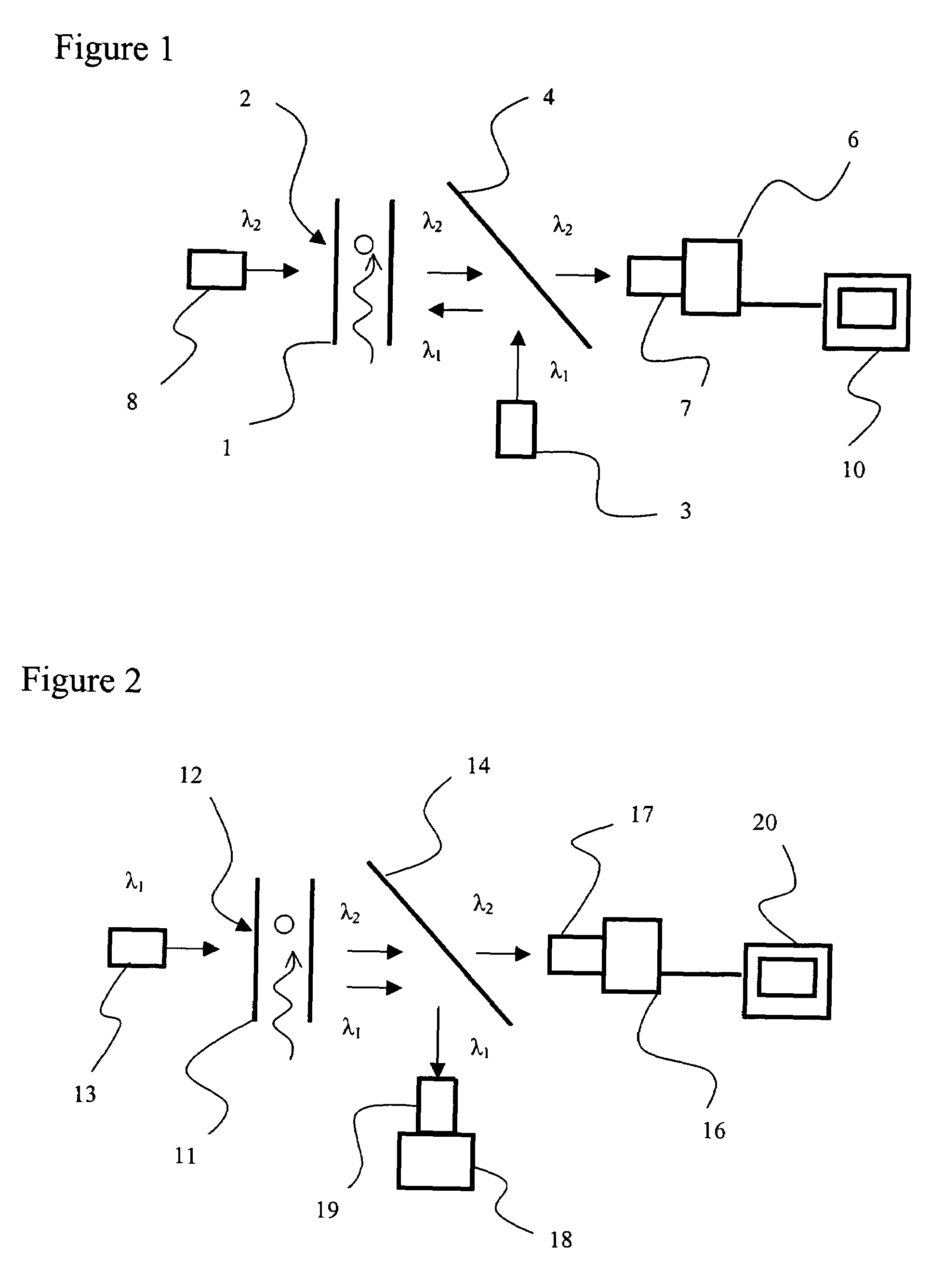Automatic identification of suspended particles
a technology of suspended particles and automatic identification, applied in the direction of fluorescence/phosphorescence, luminescent dosimeters, optical radiation measurement, etc., can solve the problems of inability to select fluorescent probes, inability to use selective fluorescent probes, and relatively slow methods
- Summary
- Abstract
- Description
- Claims
- Application Information
AI Technical Summary
Problems solved by technology
Method used
Image
Examples
Embodiment Construction
[0036]The present invention is based on the recognition that a digital optical imaging system can derive significant morphological information for a particle even when the system is operated under optical conditions such that the image contains levels of distortion, which would be unacceptable using conventional visual techniques. Specifically, the system can be operated: a) using a smaller number of pixels, e.g. 9 to 200, preferably 15 to 100, than that conventionally used for high quality imaging, thereby increasing processing speed; b) employing diffraction enlargement of particles, thereby allowing a reduction in the magnification and an increase in the depth of field, which relaxes the requirement for precise positioning of a particle or allowing multiple particles to be imaged simultaneously; c) employing particle velocities, which give rise to a finite degree of streaking; and d) employing a sample depth, which allows some particles to be partially out-of-focus.
[0037]A first ...
PUM
| Property | Measurement | Unit |
|---|---|---|
| depth | aaaaa | aaaaa |
| fluorescent | aaaaa | aaaaa |
| wavelength | aaaaa | aaaaa |
Abstract
Description
Claims
Application Information
 Login to View More
Login to View More - R&D
- Intellectual Property
- Life Sciences
- Materials
- Tech Scout
- Unparalleled Data Quality
- Higher Quality Content
- 60% Fewer Hallucinations
Browse by: Latest US Patents, China's latest patents, Technical Efficacy Thesaurus, Application Domain, Technology Topic, Popular Technical Reports.
© 2025 PatSnap. All rights reserved.Legal|Privacy policy|Modern Slavery Act Transparency Statement|Sitemap|About US| Contact US: help@patsnap.com


